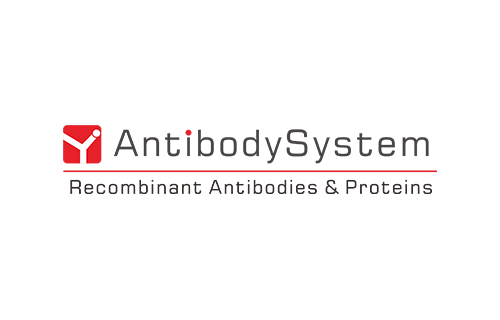Catalog No.
RHH21601
Host species
Mouse
Isotype
IgG2a, kappa
Clonality
Monoclonal
Target
Potassium channel, inwardly rectifying subfamily J member 8, uKATP-1, ATP-sensitive inward rectifier potassium channel 8, KCNJ8, Inward rectifier K(+) channel Kir6.1
Concentration
1 mg/ml
Endotoxin level
Please contact with the lab for this information.
Purity
>95% as determined by SDS-PAGE.
Purification
Protein A/G purified from cell culture supernatant.
Applications
IHC, WB
Form
Liquid
Storage buffer
0.01M PBS, pH 7.4.
Stability and Storage
Use a manual defrost freezer and avoid repeated freeze-thaw cycles. Store at 4°C short term (1-2 weeks). Store at -20°C 12 months. Store at -80°C long term.
Clone ID
N366/12
Kir6.1, a component of an ATP-sensitive potassium channel, regulates natural killer cell development., PMID:39687626
Kir6.1, a component of an ATP-sensitive potassium channel, regulates natural killer cell development., PMID:39211194
KATP and TRPM2-like channels couple metabolic status to resting membrane potential of octopus neurons in the mouse ventral cochlear nucleus., PMID:33581312
Localization of ATP-sensitive K+ channel subunits in rat liver., PMID:31938690
SUR1-TRPM4 channels, not KATP, mediate brain swelling following cerebral ischemia., PMID:31899311
Modulation of Excitability of Stellate Neurons in the Ventral Cochlear Nucleus of Mice by ATP-Sensitive Potassium Channels., PMID:29379989
Altered expression of ATP-sensitive K(+) channels in Hirschsprung's disease., PMID:27001456
Vascular endothelial growth factor secretion from pituitary folliculostellate cells: role of KATP channels., PMID:24176035
Evidences for an ATP-sensitive potassium channel (KATP) in muscle and fat body mitochondria of insect., PMID:23973818
Opening/blocking actions of pyruvate kinase antibodies on neuronal and muscular KATP channels., PMID:22967932
Enhancement of liver regeneration by adenosine triphosphate-sensitive K⁺ channel opener (diazoxide) after partial hepatectomy., PMID:22466787
KATP channels in mesenchymal stromal stem cells: strong up-regulation of Kir6.2 subunits upon osteogenic differentiation., PMID:21820692
Different localization of ATP sensitive K+ channel subunits in rat testis., PMID:21328565
Effect of potassium channel opener pinacidil on the contractions elicited electrically or by noradrenaline in the human radial artery., PMID:21236249
Human oocytes express ATP-sensitive K(+) channels., PMID:20847183
Immunolocalization of mitoKATP subunits in human osteoblast-like cells., PMID:20036918
Angiotensin II and tumour necrosis factor alpha as mediators of ATP-dependent potassium channel remodelling in post-infarction heart failure., PMID:19460779
ATP-sensitive potassium currents in rat primary afferent neurons: biophysical, pharmacological properties, and alterations by painful nerve injury., PMID:19422886
Localization of the sulphonylurea receptor subunits, SUR2A and SUR2B, in rat renal tubular epithelium., PMID:18323694
Is Kir6.1 a subunit of mitoK(ATP)?, PMID:18068667
Cardiac sulfonylurea receptor short form-based channels confer a glibenclamide-insensitive KATP activity., PMID:18001767
Identification of two types of ATP-sensitive K+ channels in rat ventricular myocytes., PMID:17097686
Evidence for functional ATP-sensitive (K(ATP)) potassium channels in human and equine articular chondrocytes., PMID:16891130
K+-ATP-channel-related protein complexes: potential transducers in the regulation of epithelial tight junction permeability., PMID:16820413
ATP-sensitive K+-channel subunits on the mitochondria and endoplasmic reticulum of rat cardiomyocytes., PMID:15983113
Pore-forming subunits of K-ATP channels, Kir6.1 and Kir6.2, display prominent differences in regional and cellular distribution in the rat brain., PMID:15739238
Caveolae localize protein kinase A signaling to arterial ATP-sensitive potassium channels., PMID:15499025
K ATP channels of primary human coronary artery endothelial cells consist of a heteromultimeric complex of Kir6.1, Kir6.2, and SUR2B subunits., PMID:15380676
ATP-sensitive K(+) channels regulate the concentrative adenosine transporter CNT2 following activation by A(1) adenosine receptors., PMID:15024061
Selective expression of Kir6.1 protein in different vascular and non-vascular tissues., PMID:14667937
Heart mitochondria contain functional ATP-dependent K+ channels., PMID:14596790
Functional coupling between sulfonylurea receptor type 1 and a nonselective cation channel in reactive astrocytes from adult rat brain., PMID:13679426
Hypothalamic ependymal-glial cells express the glucose transporter GLUT2, a protein involved in glucose sensing., PMID:12859684
Distribution of Kir6.0 and SUR2 ATP-sensitive potassium channel subunits in isolated ventricular myocytes., PMID:12738227
Ageing is associated with a decrease in the number of sarcolemmal ATP-sensitive K+ channels in a gender-dependent manner., PMID:11850031
Assembly limits the pharmacological complexity of ATP-sensitive potassium channels., PMID:11825905
Kir6.1 is the principal pore-forming subunit of astrocyte but not neuronal plasma membrane K-ATP channels., PMID:11749042
Gender-specific difference in cardiac ATP-sensitive K(+) channels., PMID:11527652
Is the molecular composition of K(ATP) channels more complex than originally thought?, PMID:11448141
A new ER trafficking signal regulates the subunit stoichiometry of plasma membrane K(ATP) channels., PMID:10197533
Kir6.1: a possible subunit of ATP-sensitive K+ channels in mitochondria., PMID:9434770
Channel activators regulate ATP-sensitive potassium channel (KIR6.1) expression in chick cardiomyocytes., PMID:9257703

